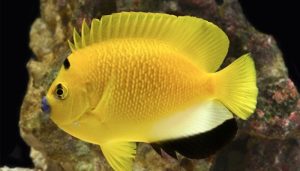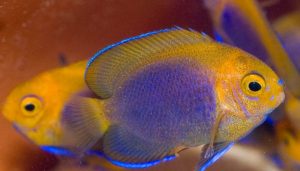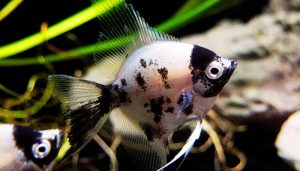Are you curious to know what do goldfish eggs look like in a fish tank, and how they differ from other fish’s offspring? If so, you have landed at the right place!
Goldfish eggs are relatively small in size but provide insight into the fascinating life cycle of these vibrant fish species.
In this exclusive blog post, we will go through what does goldfish eggs look like, their fertility rate, and key tips for caring for them successfully.
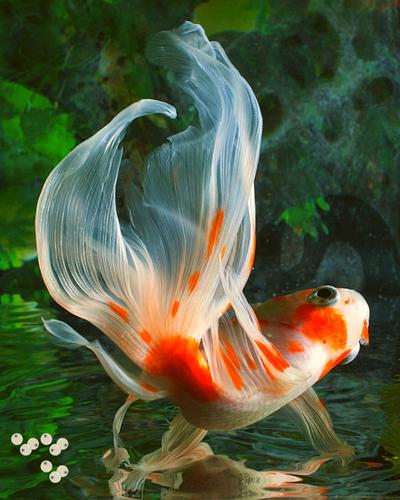
Keep reading as we unlock all the secrets you need to be knowledgeable about how do goldfish eggs look like, and gold fish egg care.
Table of Contents
ToggleWhat Do Goldfish Eggs Look Like in a Tank?
What does a goldfish egg look like? Goldfish eggs are small and round with a slightly transparent jelly-like coating. They are often tan to light brown but can also have an orange tint due to the pigmentation of the male’s milt (sperm).
The size of goldfish eggs may vary depending on the species, but they usually measure from 2-3 millimeters in diameter.
How Do Goldfish Lay Eggs?
Golden fish lay eggs during spawning when a male and female goldfish come together to mate. During this time, the female will release hundreds of eggs into the water, and the male will release his milt (sperm) designed to fertilize them.
All the eggs will sink to the bottom of the tank and cling to plants, rocks, or other objects in the aquarium.
What Is the Fertility Rate of Goldfish Eggs?
The fertility rate of gold fish eggs can be quite variable due to factors such as water temperature, pH levels, and age/health of the fish.
The ideal water temperature for goldfish with eggs in tank is 63-77 degrees Fahrenheit, with a pH of 6.5-7.0. If these levels are not met, the fertility rate may suffer significantly, resulting in fewer viable eggs being produced.
Additionally, older goldfish tend to have lower fertility rates than younger fish due to the diminishing quality of their eggs.
fertilized vs unfertilized goldfish eggs
The difference between fertilized and unfertilized goldfish eggs are quite distinct, both in appearance and developmental potential. Here’s a breakdown:
Appearance:
- Fertilized:
- Color: Light brown, slightly translucent, “tea-colored”
- Clarity: Become more transparent over time
- Development: Develop tiny black spots (eyes) within 2-3 days
- Unfertilized:
- Color: Opaque white or cloudy
- Clarity: Remain cloudy and don’t become transparent
- Development: No eye spots appear, eventually turn fuzzy with fungus
Developmental Potential:
- Fertilized:
- Can develop into healthy goldfish fry
- Hatch after 4-7 days depending on water temperature
- Unfertilized:
- Will not develop into fry
- Eventually disintegrate or succumb to fungus
Additional things to note:
- The presence of a male goldfish is necessary for fertilization. Females can still lay eggs even without a male, but these will be unfertilized and won’t hatch.
- If you’re unsure whether your eggs are fertilized, observe them for a few days. Fertilized eggs will become clearer and develop eye spots, while unfertilized eggs will remain cloudy and may develop fungus.
- Unfertilized eggs can pose a risk to the water quality as they decompose, so it’s best to remove them when possible.
How Often Do Goldfish Lay Eggs?
Goldfish typically lay eggs once or twice a year, usually in the spring and autumn. The eggs are usually laid on plant leaves in the water and can take anywhere from two weeks to two months to hatch.
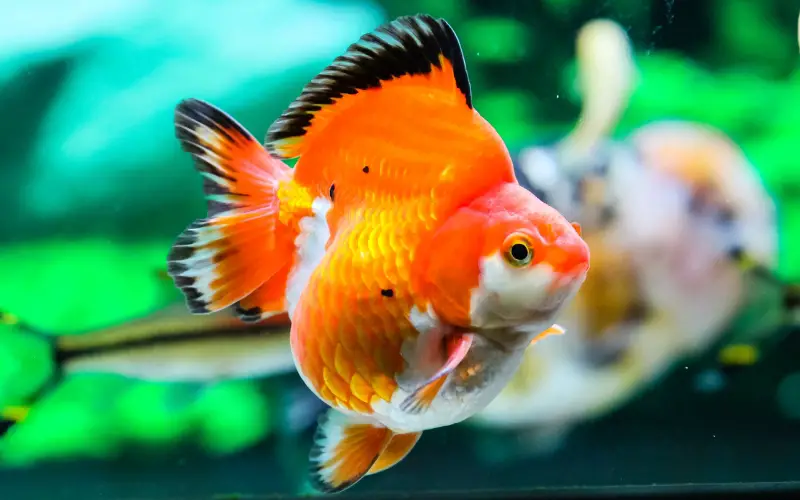
For the eggs to be successfully fertilized, multiple goldfish need to be present; it’s also essential for a good food source available for them.
what do goldfish eggs look like in a pond?
How does fish eggs look like in ponds? Goldfish eggs in a pond are tiny and delicate, often blending in with their surroundings, making them tricky to spot. Here’s what to look for:
Size: They’re tiny, usually about the size of a poppy seed or a pinhead, measuring around 1-1.5 mm in diameter.
Color: They can be transparent, precise, pale yellow, or amber. Sometimes, they might even have a slight greenish tinge.
Shape: Gold fish eggs are spherical, like tiny beads.
Location: They’re sticky and adhesive, so you’ll typically find them attached to aquatic plants, rocks, or the sides of the pond. Look for them in shallow areas with plenty of cover, especially near the pond’s edges.
Here are some additional tips for finding goldfish eggs:
- Check for them early in the morning, when the light is low, and they’re easier to see against the dark background.
- Use a net or your hands to move aquatic plants and debris, revealing hidden eggs gently.
- Be careful not to damage the goldfish eggs in fish tank or plants attached to them.
What do pond goldfish eggs look like? If you’re lucky enough to find goldfish with eggs in your pond, remember that they’re a valuable food source for other fish, including the adult goldfish. If you want to protect the eggs and increase your chances of hatching baby goldfish, remove them to a separate tank or container with clean pond water.
How to Take Care Of Goldfish Eggs (5 Simple tips)
Although you have a reliable shrimp nanny, you must keep the golden fish eggs. Watch your eggs every day and observe their progression.
Tank conditions such as water temperatures and pH levels, including egg fish goldfish quality, have critical importance. When laying eggs for the goldfish, you must ensure they are clean as soon as they start.
5 Key Tips for Successful Goldfish Egg Care
1. Check the water temperature & pH levels regularly
It’s essential to monitor the water temperatures in your tank as this can directly affect the fertility rate of goldfish eggs. The ideal temperature range is between 63-77 degrees Fahrenheit, and the optimal pH level is 6.5-7.0
2. Regularly clean the tank
Common Goldfish eggs are prone to fungal infections, so keeping the tank clean and free of any debris or buildup is essential.
3. Feed them nutritious food
Ensure your goldfish have access to a balanced diet that includes all the necessary nutrients to stay healthy.
4. Provide plenty of oxygen
Goldfish eggs need access to plenty of oxygen to develop correctly, so ensure there is an adequate amount in the tank.
5. Don’t move the eggs
Moving around goldfish eggs can cause them to become dislodged from their anchor points, resulting in a lower hatch rate.
By following these tips and taking the proper precautions, you’ll be well on your way to providing the best care for your goldfish eggs in tank. With patience and dedication, you should see successful results in no time!
What Month Do Goldfish Lay Eggs? (goldfish life cycle)
Goldfish typically lay eggs in late May through early June. This is the spawning season for goldfish, and you may notice your fish displaying signs of nesting during this time.
These signs can include chasing each other around the tank, digging or fanning a circular shape with their tails in the gravel, and even fighting over territories to protect where they will lay their eggs.
What Are the Signs of a Goldfish Laying Eggs?
What do fish eggs look like in a tank? When an adult goldfish is about to lay eggs, you’ll notice some visible signs that can help identify the behavior. The most common sign is when a female goldfish develops a rounded tummy, and her pelvic fins will become bright red or swollen.
You may also start seeing white strings of mucus near rocks or another décor in the goldfish fry tank, which means she’s preparing to lay her eggs.
Additionally, your fish may start chasing after the male, and they both swim quickly around each other to stimulate goldfish breeding. Watch for these signs when you suspect your goldfish are going through egg-laying activities!
How to Tell If Goldfish Eggs Are Fertilized?
What do fertilized goldfish eggs look like? You can tell if goldfish eggs are fertilized by looking at them carefully.
The fertilized eggs will have tiny black dots that indicate the sperm has attached to the egg, which means it is fertilized.
Also, if you gently touch the eggs with a Q-tip, you should notice movement from within the egg; this indicates that male fertile eggs.
Once your goldfish eggs are fertilized and hatch, you’ll enjoy an exciting new batch of baby goldfish!
You can care for your gold fish eggs and watch them grow to their full potential with patience and dedication.
Just consider keeping an eye on the water temperature, pH levels, cleanliness of the fry tank, oxygen levels, and nutrition quality to provide your fish with the best environment for healthy goldfish eggs.
What Do Unfertilized Goldfish Eggs Look Like?
Unfertilized eggs will be clear and lack any spots. Goldfish eggs, with a pristinely white hue, are as tiny and delicate as bubbles. Before fertilization, they present in an undeniably circular form.
However, once fertilized, they will transform into black or dark gray with spots of varying size and shape. If the fish egg is not fertilized, it will eventually dry up and become opaque.
It’s essential to keep an eye on your goldfish eggs and ensure they remain clean and debris-free. Dead goldfish eggs in aquarium can become contaminated.
So removing them from the tank using a mixture of methylene blue and dechlorinated water is crucial to prevent fungus infection for the other eggs.
Also, You can add cherry shrimp, ghost shrimp, or others to the fish tank. They know how to pick out the corrupt eggs, and goldfish eat them.
Why Do Goldfish Eggs Float?
Most of the time, the eggs you lay in fish will go into the water without any CO2 or O2 in the water column. It isn’t widespread but occurs in a tank of abundant leaves (live plants). Plants absorb gases by photosynthesis. It is easiest if one can fish the eggs in a net.
For floating eggs, it’s best to move them over to a separate tank. This will give you much better control and ensure they can develop healthily.
You can also add some water conditioner to the fry tank that will help protect the healthy goldfish eggs in fish tank and keep them safe from any bacteria or other hazards.
How Many Goldfish Eggs Hatch?
Between 300 and 500 goldfish eggs will hatch from a single batch. The exact number can depend on the female’s egg sac size, water quality, temperature, and other environmental factors.
Depending on the type of goldfish, it usually takes 4-10 days for all their eggs to hatch. Keep in mind that some eggs may not hatch at all, so it’s essential to take the time to monitor your goldfish eggs and make sure they are all healthy and ready to hatch. That’s why breeders put “spawning mop” in their tanks when breeding goldfish.
Can Goldfish Lay Eggs Without Male?
Female goldfish can lay unfertilized eggs without a male in the tank. This phenomenon is known as ‘parthenogenesis,’ which is the development of an offspring from an egg fish goldfish that has not been fertilized.
Although it only occurs rarely in nature and most animals cannot reproduce this way, some species can produce offspring with no genetic material from a male.
Goldfish (Cyprinus carpio) fall into this category, meaning they can lay eggs without any involvement from a male goldfish.
When female goldfish with eggs become stressed — due to overcrowding or poor water conditions — they may release hormones that cause them to lay typical fish eggs even if there are no males around.
However, these eggs of goldfish will not hatch because there is no sperm present to fertilize them and trigger embryonic egg goldfish development. Because of this, parthenogenesis rarely leads to successful reproduction in goldfish because the unfertilized eggs won’t result in viable newly hatched fry (baby fish).
How Long Does It Take for Gold Fish Eggs to Hatch?
Depending on the environmental conditions, Goldfish eggs usually take four to seven days to hatch.
The water temperature significantly affects how long it takes for goldfish eggs to hatch; ideally, the water should be between 65-75 degrees Fahrenheit (18-24 degrees Celsius).
With too high or low temperatures, hatching times can increase. In addition, oxygen levels directly affect the incubation period of goldfish eggs.
Areas with more significant quantities of oxygen will result in shorter periods required for them to hatch. Once hatched, the fry is immediately mobile and seeks food and shelter from predators.
Other factors that influence hatching times include the size of egg sacs and their depth in water sources – larger egg sacs often require more time, as do those found deeper within water sources due to a lack of appropriate oxygen levels at lower depths.
Additionally, fertilized goldfish eggs often have a gooey or jelly-like substance surrounding them – this mucus can also slow down goldfish eggs hatching rates.
Commonly Asked Questions about how do fish eggs look like (FAQs)
What do shubunkin eggs look like?
What do shubunkin fish eggs look like? Shubunkin eggs are tiny, transparent spheres, about the size of a pinhead. They’re typically light amber or yellow in color with a small, dark central dot, the developing fish’s eye.
How does goldfish eggs look like?
What do gold fish eggs look like? Tiny, transparent bubbles with a dark central dot (developing eye), like miniature yellow beads scattered in water.
What does fish eggs look like?
What does a fish egg look like? Appearance varies, but generally think tiny, translucent spheres! Colors range from amber to white, often with a dark central dot (developing eye). Think miniature “fish roe” beads scattered in water.
Do goldfish lay eggs?
Does goldfish lay eggs? Yes! Goldfish are prolific egg-layers, scattering hundreds of tiny, amber-colored beads during their springtime spawning season.
How big are goldfish eggs?
What do fish eggs look like in a fish tank? Common Goldfish eggs are surprisingly tiny, just about 1.5 millimeters in diameter, smaller than a pinhead! Imagine miniature amber beads scattered in water.
What do fish eggs look like in tank?
What does fish eggs look like in a tank? Fish eggs in a tank: tiny, translucent spheres! Fertilized: light brown, eyes develop. Unfertilized: white, opaque, no eyes. Watch for changes to tell the difference!
What does a goldfish look like?
A goldfish is a small, freshwater fish with a round body, scales, and vibrant colors like orange, red, or yellow. It has a pair of fins, a tail, and bulging eyes.
What does goldfish sperm look like?
Goldfish sperm is milky white, almost invisible in water, released in clouds during spawning rituals.
Do fish eggs float?
Yes, fish eggs typically float. They are buoyant due to a small drop of oil inside the egg, which helps keep them suspended in the water column.
How are goldfish eggs fertilized?
Goldfish eggs are fertilized externally. During spawning, the female releases eggs, and the male releases sperm to fertilize them in the water. The eggs are then left to develop on their own.
When do goldfish lay eggs?
Goldfish get frisky in warmer months! Expect egg-laying sprees in spring and summer when water hits 60°F or above. Indoor tanks can see spawning year-round if warm conditions persist.
Final Thoughts
So, what does a goldfish egg look like? In conclusion, we have seen that gold fish eggs look clear or light yellow-orange, small round “bubbles” and can quickly hatch within two days of spawning. If you wish to increase the chances of success in raising baby goldfish, it is essential to provide the right environment with clean water, adequate food, and plenty of hiding spaces. Goldfish are also extremely sensitive to their environment, so create a network of oxygen-rich pond plants and keep up with regular water changes. With the necessary knowledge and care, it is possible to successfully breed goldfish, raise baby goldfish, and watch them grow into beautiful adult fish.
You might also like
- How Often Do Goldfish Lay Eggs & What does it Look Like?
- Will Goldfish Mate in a Tank? Step-By-Step (Breeding Guide)
- Why Is My Goldfish Turning Black: 5 Common Causes (Solved)
- Ideal Goldfish temperature water: (All Seasons Safe Range)
- When Is Goldfish Breeding Season? (Surprising Facts & FAQ)
- How Long Does It Take for Goldfish Eggs to Hatch? (Revealed)
- How Often Do Goldfish Breed in a Pond? (10 Shocking Facts)
- 3 Shocking Reasons Why Do Goldfish Die So Fast (Solved)
- How Long Do Goldfish Live in a 20 Gallon Tank: Unlock Secret
- Help! Goldfish Illness Black Spots: 3 Causes & Quick Solutions
- Cloudy Goldfish Eye 101: Common Causes & Proven Solutions!


